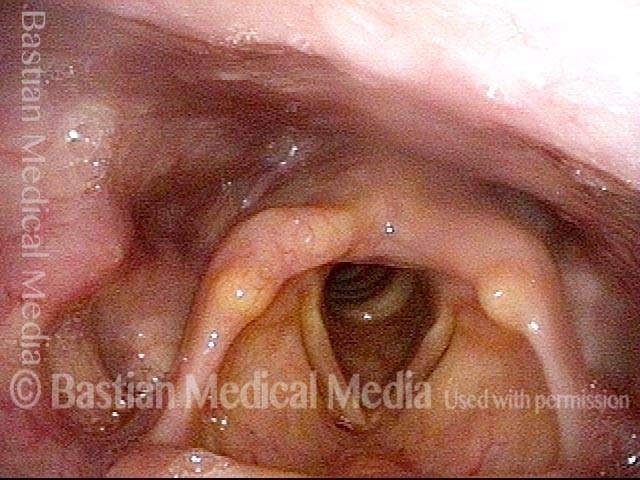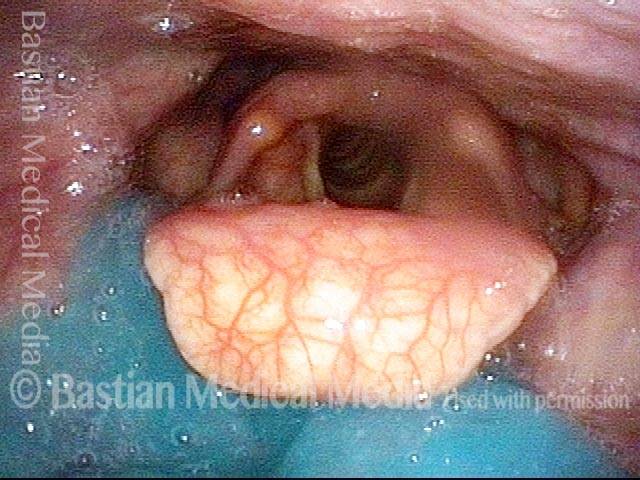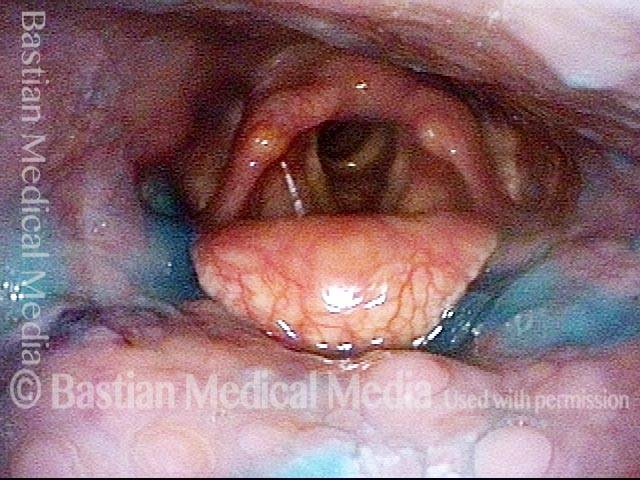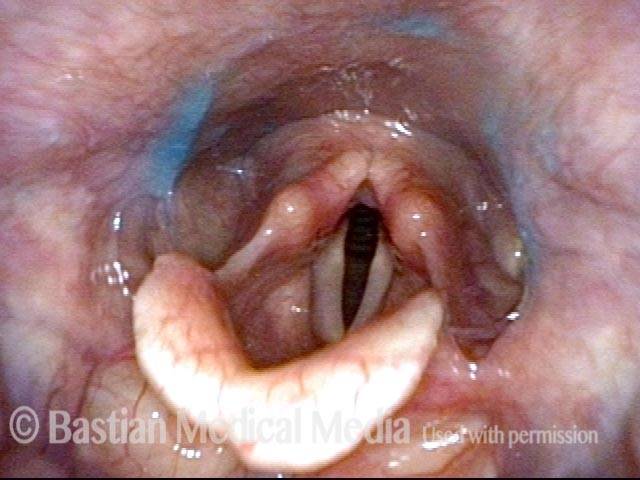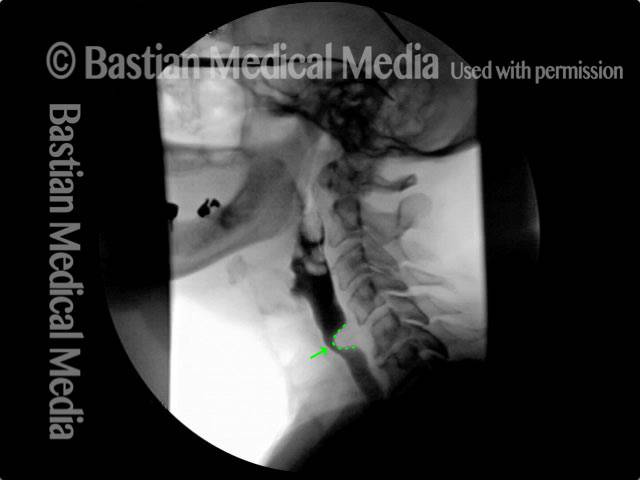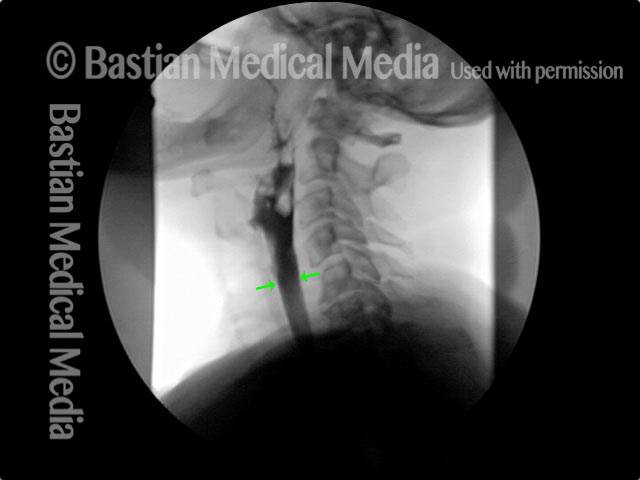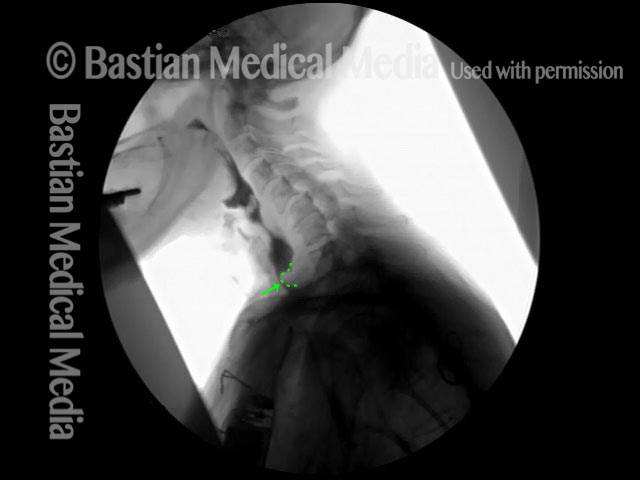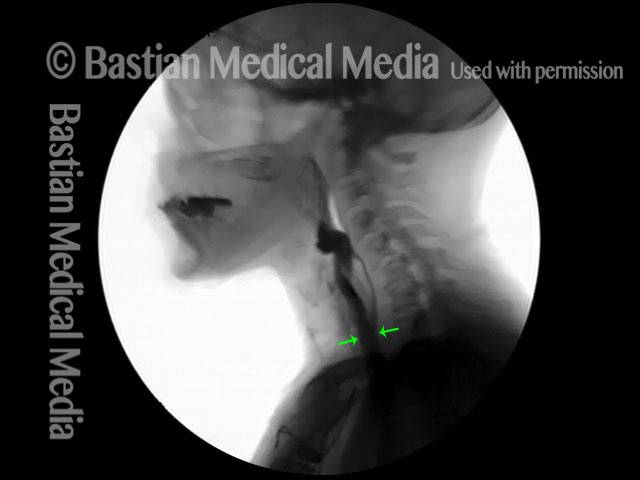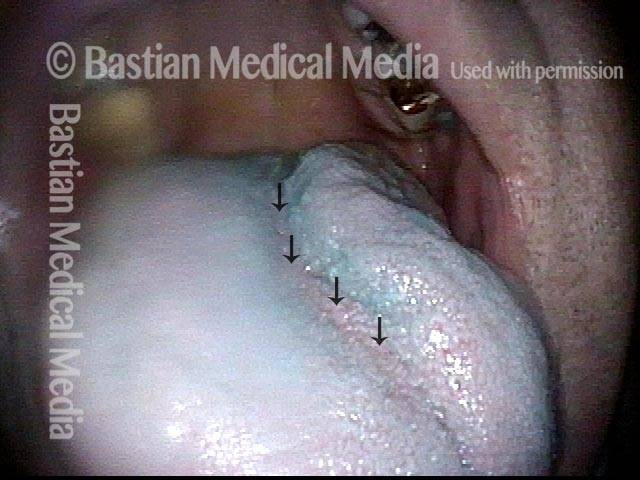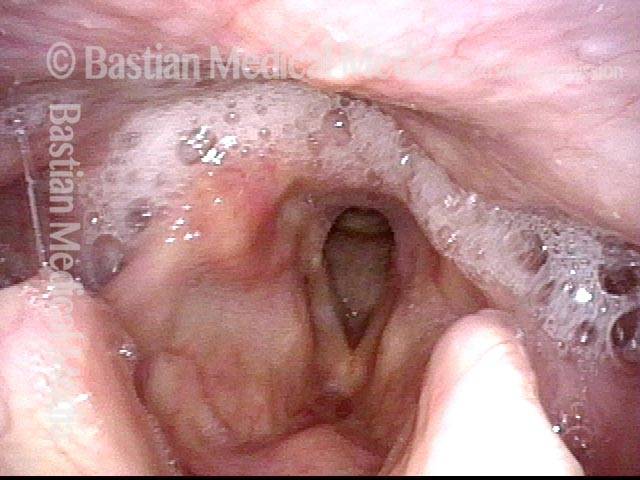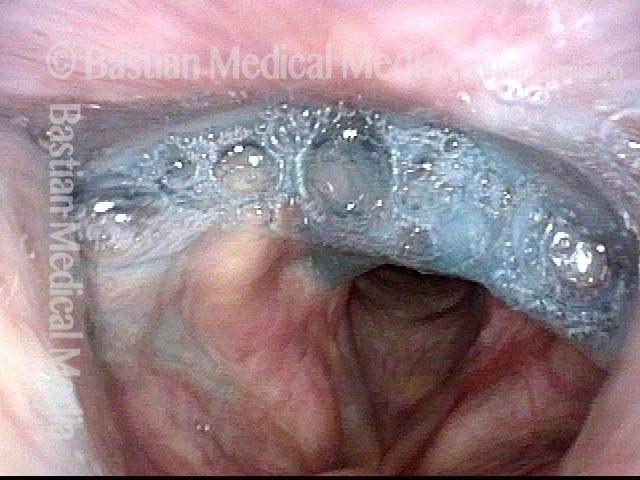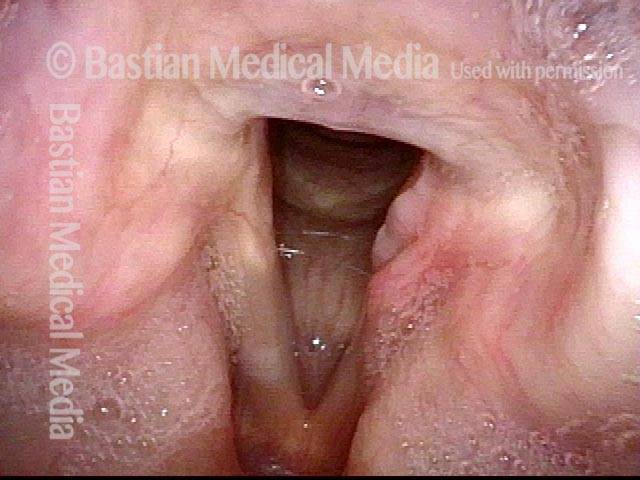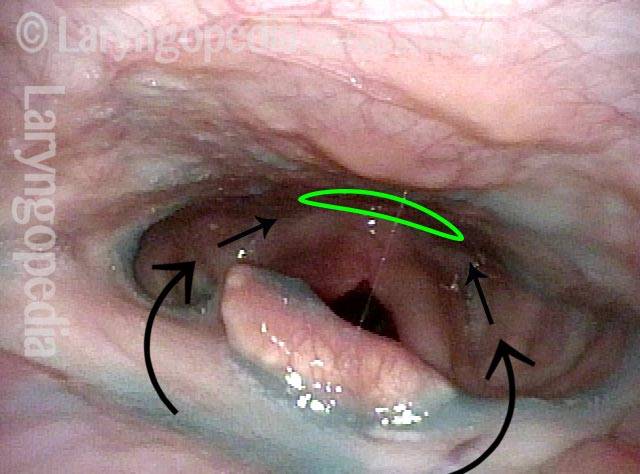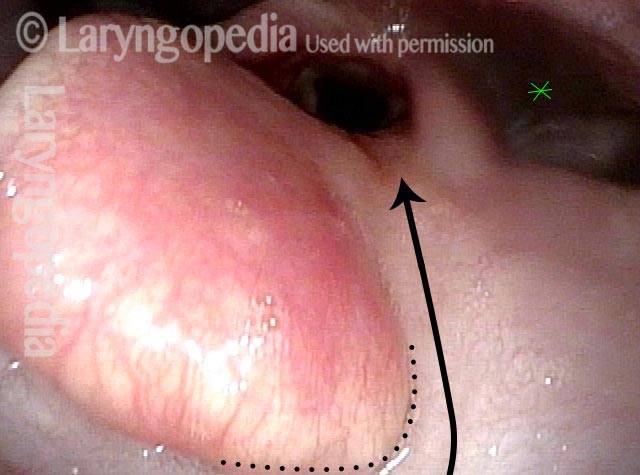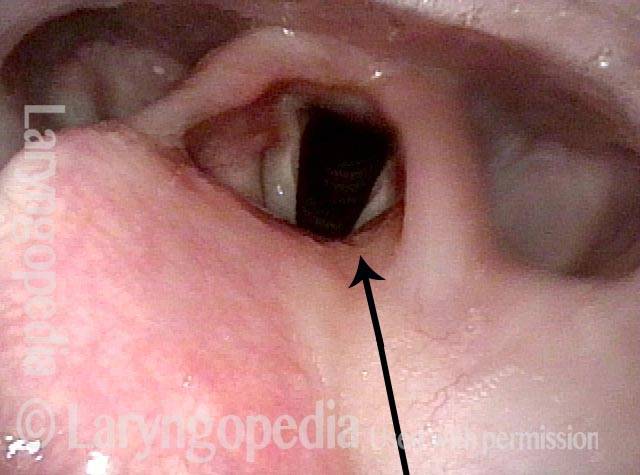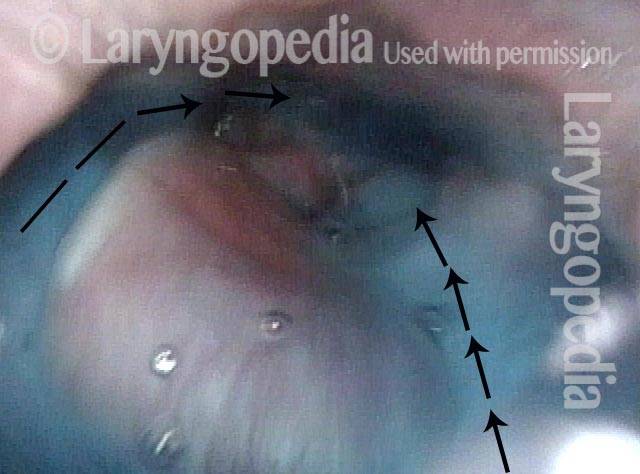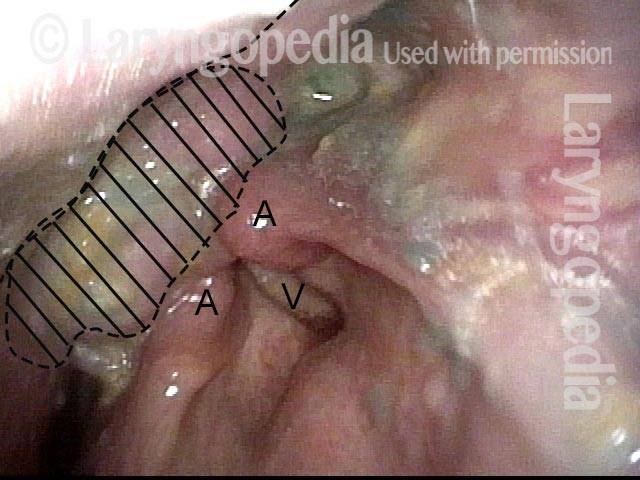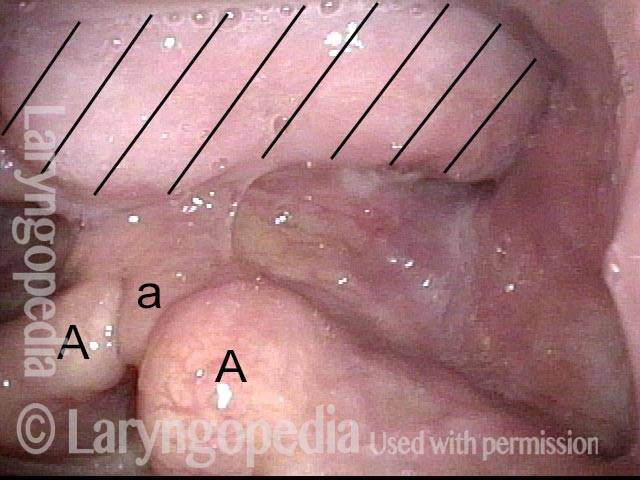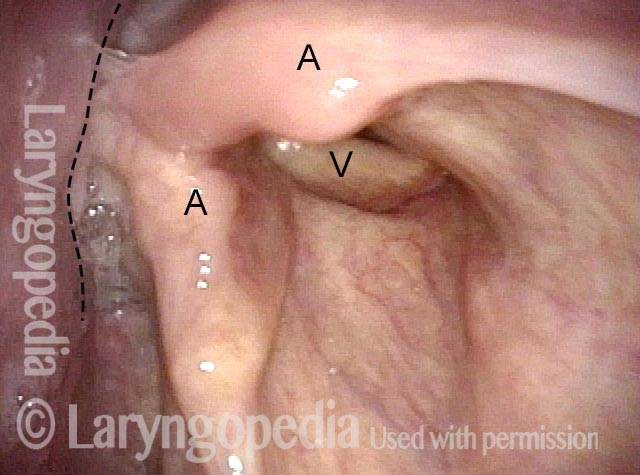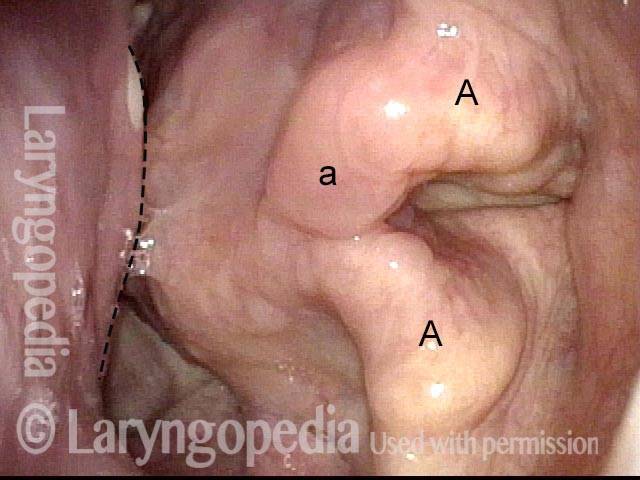Dysphagia
Abnormal swallowing, or inability to swallow. Dysphagia can result from such diverse causes as surgery on the larynx or neck, stroke, the aging process, tumor, injury to the neck, or radiation, among other things.
Treatment for Dysphagia (Swallowing therapy)
This therapy is typically provided by a speech-language pathologist (and, more informally and adjunctively, by other healthcare professionals). General areas of teaching might include: choosing wisely which food types and consistencies to eat; swallowing maneuvers such as tucking the chin, double swallow, effortful swallow, head turning, and supraglottic swallow; and direct exercises for the tongue, pharynx, palate, and larynx.
Diet Modification
These are suggested dietary changes, particularly regarding food consistencies, directed at improving a patient’s ability to swallow and at avoiding aspiration.
For example, an individual who is struggling with aspiration might be advised to avoid thin liquids and use thicker or carbonated liquids instead. Or this individual might be advised to avoid composite foods, since his or her swallowing deficiency could make it harder to “stay organized” with several consistencies in the mouth at once.
Dysphagia / Delayed Swallow Reflex
Laryngopharynx (1 of 3)
Laryngopharynx (1 of 3)
Dysphagia / Delayed swallow reflex (2 of 3)
Dysphagia / Delayed swallow reflex (2 of 3)
Hypopharyngeal pooling (3 of 3)
Hypopharyngeal pooling (3 of 3)
Hypopharynx Pooling After Swallow
Hypopharynx pooling after swallow (1 of 1)
Hypopharynx pooling after swallow (1 of 1)
Cricopharyngeal dysfunction, before and after myotomy
Cricopharyngeal dysfunction: before myotomy (1 of 2)
Cricopharyngeal dysfunction: before myotomy (1 of 2)
Cricopharyngeal dysfunction: after myotomy, resolved (2 of 2)
Cricopharyngeal dysfunction: after myotomy, resolved (2 of 2)
Example 2
Cricopharyngeal dysfunction: before myotomy (1 of 2)
Cricopharyngeal dysfunction: before myotomy (1 of 2)
Cricopharyngeal dysfunction: after myotomy, resolved (1 of 2)
Cricopharyngeal dysfunction: after myotomy, resolved (1 of 2)
Dysphagia, Due to Tongue Weakness
Dysphagia, due to tongue weakness (1 of 4)
Dysphagia, due to tongue weakness (1 of 4)
Dysphagia, due to tongue weakness (2 of 4)
Dysphagia, due to tongue weakness (2 of 4)
Dysphagia, due to tongue weakness (3 of 4)
Dysphagia, due to tongue weakness (3 of 4)
Dysphagia, due to tongue weakness (4 of 4)
Dysphagia, due to tongue weakness (4 of 4)
Scarring diverts swallowed materials directly into the larynx
Post tonsillectomy (1 of 4)
Post tonsillectomy (1 of 4)
Closer view (2 of 4)
Closer view (2 of 4)
The “chute” (3 of 4)
The “chute” (3 of 4)
Abnormal diversion (4 of 4)
Abnormal diversion (4 of 4)
Solid Food Dysphagia Due to An Unexplained Benign Mass
Benign mass (1 of 4)
Benign mass (1 of 4)
Closer view (2 of 4)
Closer view (2 of 4)
One week post-op (3 of 4)
One week post-op (3 of 4)
Trumpet maneuver post-op (4 of 4)
Trumpet maneuver post-op (4 of 4)
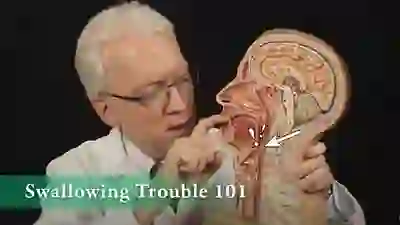
Swallowing Trouble 101
This video gives an overview of how swallowing works, how it can sometimes go wrong (presbyphagia or cricopharyngeal dysfunction), and possible ways to treat those problems (swallowing therapy or cricopharyngeal myotomy).
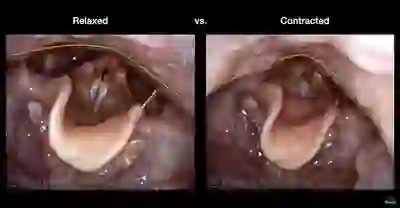
Videoendoscopic Swallowing Study
This video gives an example of a videoendoscopic swallowing study, which is a method of evaluating a person’s swallowing ability by means of a video-documented physical examination, looking from inside the throat.
